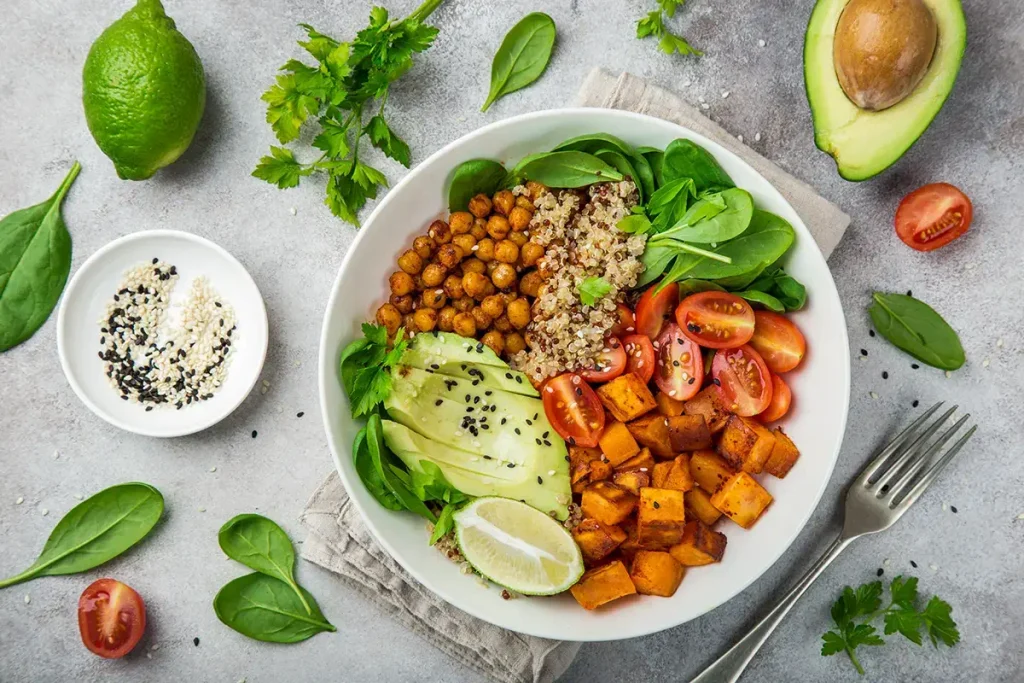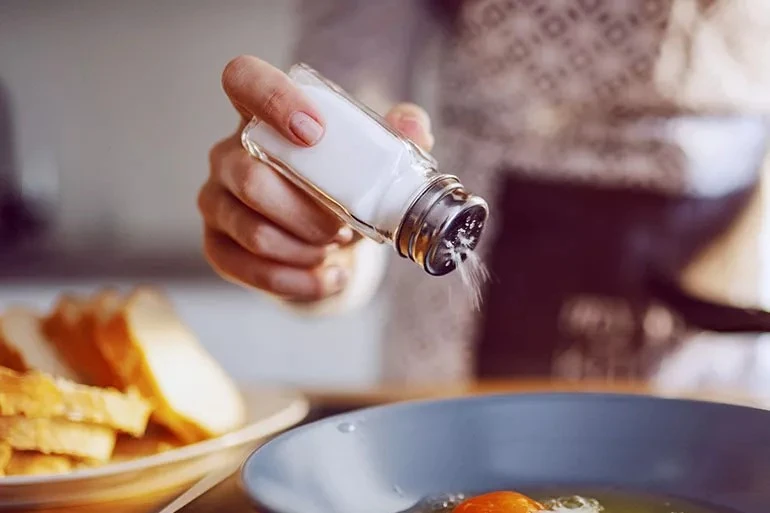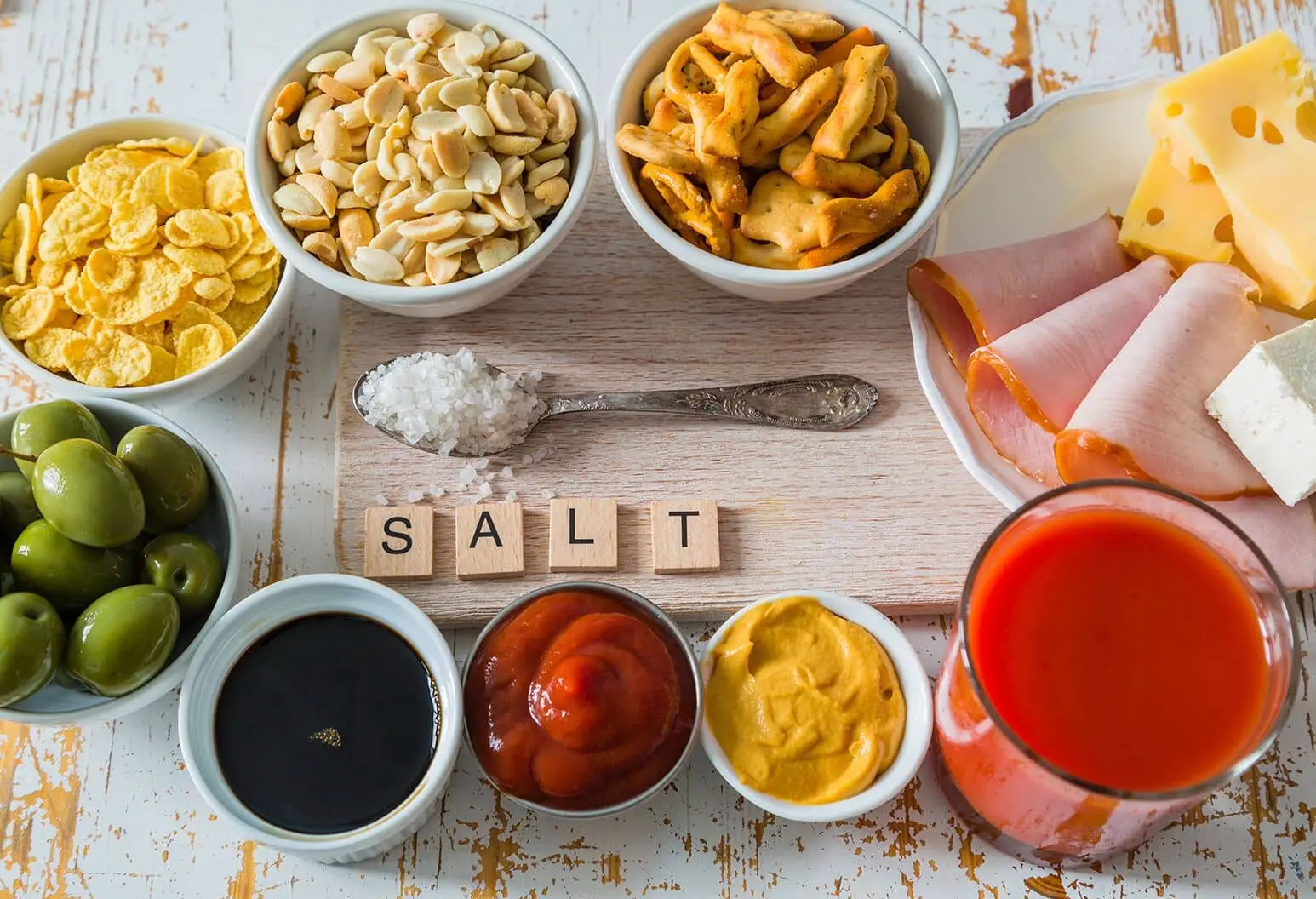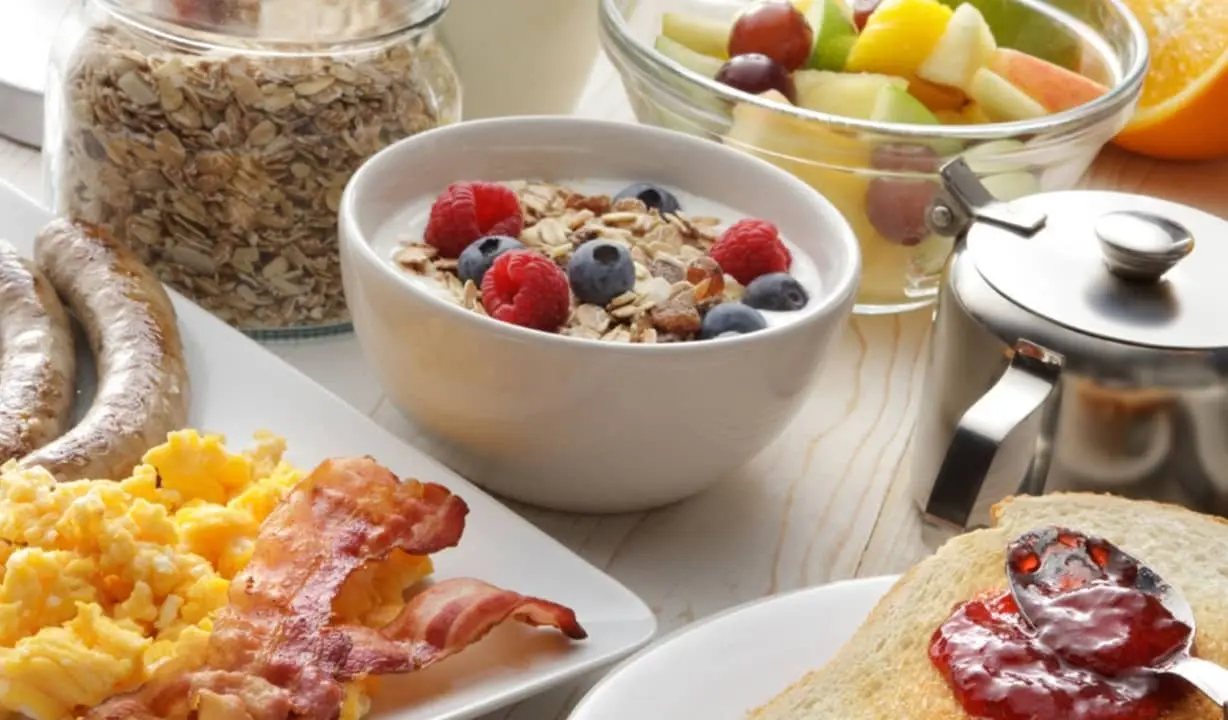
Low-Sodium Diet Plan for Elderly with High Blood Pressure
When the heart pumps blood into the arteries, it exerts a force against the walls of the blood vessels, which is called high blood pressure or systolic blood pressure. This means that the blood pressure in the arteries is higher than normal. High blood pressure is one of the most important risk factors for cardiovascular diseases, stroke, and kidney disease. In most cases, no one knows the cause of high blood pressure, but it is largely related to the foods we eat. According to medical research, home remedies for high pressure and reducing salt intake can play a significant role in controlling and preventing these diseases. In this article from the Human Health Mag website, we will examine the effects of salt consumption on blood pressure, low-sodium diet plan for elderly with high blood pressure, and strategies for reducing salt intake.
Main Factors That Cause High Blood Pressure?
Before discussing the low-sodium diet plan for elderly with high blood pressure, some of the dietary habits that we will introduce in this section cause high blood pressure. In addition, some people who are at risk of coronary, kidney and high blood pressure diseases are at risk of high blood pressure. If there is a history of high blood pressure in the family, the risk of developing this disease will also increase. Some other high blood pressure causes and risk factors include:
- Excessive sodium intake: Salty food causes high blood pressure. About a third of high blood pressure patients are prohibited from consuming sodium because sodium will cause fluid retention in the body.
- Low secretion of the enzyme renin: The enzyme renin is secreted by the kidneys, and this is less in people with dark skin, as a result, these people are at risk of high blood pressure.
- Cell resistance to insulin: Most people with diabetes also have high blood pressure. The power of insulin in the body is that it stimulates the activity of the sympathetic nervous system without increasing blood pressure.
- Overweight and obesity in the elderly: There is a close relationship between body mass index and high blood pressure. Blood flow has to work harder when passing through vessels that are narrowed by body fat, which increases the pressure on the vessel walls.
- Age: As you get older, your risk of developing high blood pressure increases because your vessels become thinner and weaker, and they also lose their elasticity.

The Effect of Salt on Blood Pressure
High blood pressure is a major health problem worldwide that can lead to more serious problems such as heart disease, stroke, and kidney failure. One of the main factors that can affect blood pressure is salt intake.
Salt, or sodium chloride, is one of the most important sources of sodium in the diet. Sodium plays a key role in regulating blood pressure. High sodium intake can increase blood volume, which in turn increases blood pressure. Studies have shown that reducing salt intake for seniors can help lower blood pressure and reduce the risk of cardiovascular disease
Sodium chloride, is one of the dietary factors that is directly linked to blood pressure. The human body needs a small amount of salt to function properly, but consuming too much of it can lead to high blood pressure. The main mechanism by which salt increases blood pressure is by increasing blood volume. Excessive salt intake causes water retention in the body, which increases blood volume and in turn raises blood pressure.
Low-Sodium Diet Plan for Elderly with High Blood Pressure Principles
Following the general principles of healthy eating while severely limiting salt in food is usually sufficient. Cooking at home allows you to have more control over the amount of salt you consume. Try to prepare homemade meals with minimal salt and use low-sodium salts or salt substitutes.
Of course, cooking low-salt food in the kitchen and completely eliminating table salt is necessary, but note that the bulk of salt (sodium) enters the body not through table salt, but through high-salt foods such as fast foods, canned foods, chips, pickles, ready-made yogurt, pickles, and sometimes even lemon juice and vinegar (which are sometimes eaten with the aim of lowering blood pressure).
Many people do not know that a large part of the salt they consume enters the body through processed foods. Canned products, ready-made foods, sausages, chips, and salty snacks are among the major sources of salt. Reading nutrition labels and being aware of the salt content of these foods can help reduce salt intake. Using natural spices and flavorings such as lemon, garlic, ginger, pepper, and aromatic herbs can improve the taste of foods without increasing salt intake.
Adjust Your Food Composition
- Eat a variety of fruits and vegetables (9 or more servings per day).
- Eat a variety of whole grains, including whole grains, beans, and peas (6 or more servings per day).
- Eat low-fat or fat-free dairy products, fish, and skinless poultry.
- Eat oils and fats that have less than 2 grams of saturated fat per tablespoon and are free of trans fats, such as butter, olive oil, and canola oil.
- Eliminate foods high in saturated fat or trans fat, such as whole milk (full-fat), fatty red meats, animal fats, and solid (hydrogenated) vegetable oils.
- Limit your intake of sugary drinks and sweets, as they are high in calories.
- Reduce your salt intake.
- For your overall health, never drink alcohol. Alcohol is high in calories, which can lead to obesity and weight gain, raise blood pressure, increase triglyceride levels, and cause diabetes. It can therefore lead to heart attack and stroke, heart muscle damage (cardiomyopathy), and heart rhythm disorders (arrhythmias).

What Foods Control HBP in Low-Sodium Diet Plan for Elderly with High Blood Pressure
- Eating foods low in fat, salt, and calories
- Using vegetables and herbs
- Using vinegar and lemon juice instead of high-calorie sauces
- Consuming oil and butter in small amounts
- Consuming skim milk and 1% fat milk
- Yogurt
- Greek yogurt
- Lean meat
- Skinless chicken and turkey
- Low-salt ready-made cereals
- Low-salt and low-fat cheeses
- Fresh, frozen, and canned fruits without added salt
- Fresh and even frozen vegetables without salt
- Vegetables rich in potassium
- Plain rice, pasta, and potatoes
- Low-salt seeds such as pumpkin and sunflower seeds
- Unsalted nuts that are rich in minerals.
What Foods Should I Avoid in Low-Sodium Diet Plan for Elderly with High Blood Pressure
- Chicken: Chickens are injected with salt water during the growth process, which makes chicken a hidden source of sodium. A 113-gram skinless chicken breast contains 40-330 milligrams.
- High-fat meats & Processed meats: Beef and ham are sources of sodium. Each 5-ounce serving contains about 1,000 milligrams of sodium, which is nearly half of the recommended daily allowance of salt.
- Sandwiches: An average ham sandwich with whole wheat bread, mayonnaise, and cheddar cheese has about 1,131 milligrams of sodium. In fact, none of the ingredients in a sandwich are blood pressure-friendly.
- Breads: A slice of 100% organic whole wheat bread has the same amount of sodium as 22 potato chips. Yeast breads, such as rolls, bagels, and sandwich breads, are the highest in sodium, and their sodium content increases when served with soups or stews.
- Canned soups: A cup of canned soup contains about 100-940 mg of sodium.
- Sugary drinks: It’s clear that soda is high in calories, and even a tablespoon of these drinks can raise blood pressure, even if you cut out 2-3 teaspoons of sugar.
- Restaurant foods and fast foods: It’s best to cut back on these foods because 71 percent of your sodium intake comes from restaurants. People who eat fried foods & fast food are consuming 6 times more sodium than they think.
- Frozen foods and vegetables: These frozen foods are sodium bombs, even if they have a famous name. Before buying, look at the product label and if it has less than 600 mg of sodium, buy it and consume it only in one serving.

- Sauces and condiments: Sodium is hidden in fats. Packaged sauces and condiments are rich in saturated fat, sugar and sodium. So it is better not to use more than one tablespoon per serving.
- Pizza: Just one slice of pepperoni pizza has more than half the daily recommended amount of sodium
- Salty snacks: Snacks such as chips, pretzels, popcorn, crackers and snacks contain high amounts of sodium. It is better to consume snacks whose labels indicate less than 140 mg of sodium. Healthy snacks for seniors with diabetes is example of these snacks.
Important Tips
People with high blood pressure and cardiovascular and kidney diseases should follow a low-salt diet. A low-salt diet consists of fresh foods that are naturally low in salt and includes fresh fruits and vegetables, fresh meat, chicken and fish, potatoes, rice and pasta. People with high blood pressure, people over 65, pregnant and breastfeeding mothers should follow this diet.
The most important reasons for consuming too much salt are the habit of salty taste and certainly by reducing the amount of salt we consume, we can get used to the low-salt taste over time. Choosing low-salt foods, using flavorings such as vinegar, lemon juice, garlic, onions and aromatic vegetables, not using processed foods and canned foods, eating unsalted or low-salt bread, and consuming raw nuts can help with excessive salt consumption and changing this habit.
Elderly people with high blood pressure should not consume more than three eggs per week, either without food or in food such as: cocoa. Avoid eating offal, brains, and kidneys; consume more low-fat dairy products and whole grains, and drink six to eight glasses of water daily.
Instead of solid oils and butter, use liquid oils such as olive oil and sunflower oil, and replace red meat and animal fats with skinless chicken, fish, and soybeans.
In elderly people with high blood pressure, the patient’s blood pressure should first be treated and controlled under the supervision of a doctor, and then the permissible physical activity for the elderly is determined based on the doctor’s recommendation. It is better for the elderly to walk twice a day, in the morning and in the evening, for 30 minutes each time. He continued that for elderly people who have just started exercising and walking or are not able to walk long distances, 10 minutes each time is sufficient, and over time, they should increase their walking.
Given the need to observe safety and health principles, the elderly should avoid exercising outdoors when the air is polluted, because exercising outdoors is harmful to the elderly. In such circumstances, they should exercise at home.
Concluding Remarks
Diet and nutrition play a role in both preventing high blood pressure and controlling and reducing blood pressure. Following a low-sodium diet plan for elderly with high blood pressure has a synergistic effect with antihypertensive medications and improves blood pressure control. On the contrary, some foods, especially salt, reduce the antihypertensive effects of some medications and, in addition to the direct effect of increasing blood pressure, also eliminate the effect of prescribed medications.
Loved this article? Or do you have suggestions to make it even better? Please share your thoughts in the comments below, and let’s work together to build better content!

Frequently Asked Questions
What is the difference between sodium and salt?
Salt is the main source of sodium. Sodium is a mineral that occurs naturally in foods and can increase blood pressure. There are different types of sodium, one example of which is monosodium glutamate, which is common in Chinese cuisine.
How does salt increase blood pressure?
When salt is consumed in large quantities, the body is forced to request more water to flush out these salts, which increases blood pressure and the extra water puts strain on the heart and arteries.
How much sodium should you consume?
According to the American Heart Association, you should not consume more than 1,500 milligrams of sodium per day (one teaspoon contains about 2,400 milligrams of sodium).
